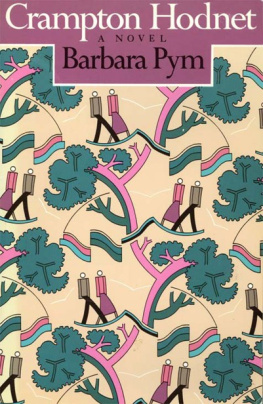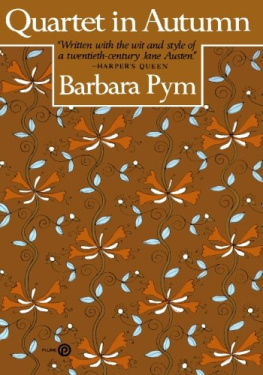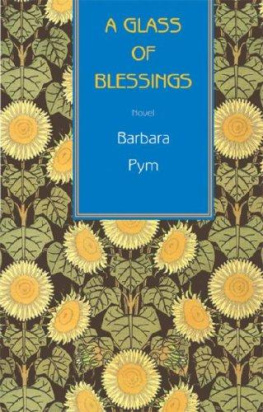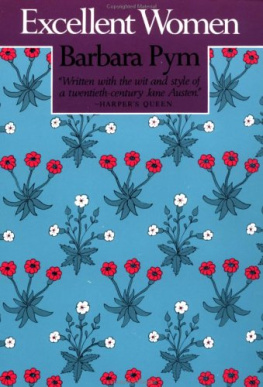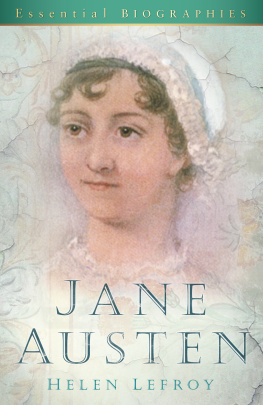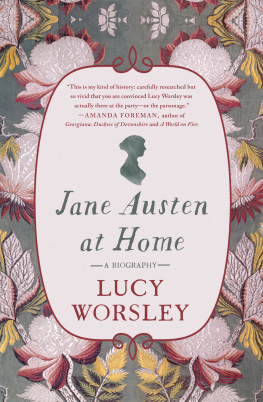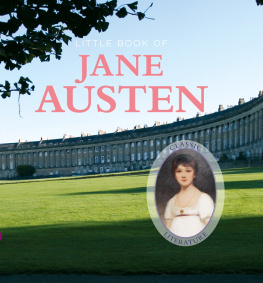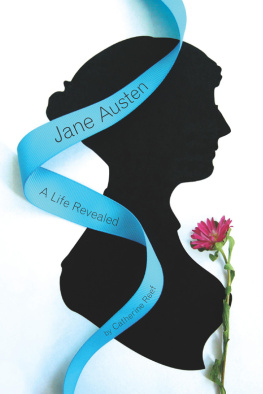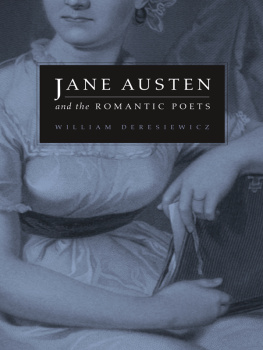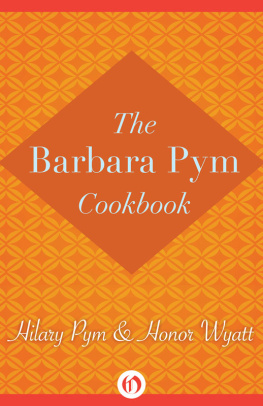Barbara Pym - Some Tame Gazelle
Here you can read online Barbara Pym - Some Tame Gazelle full text of the book (entire story) in english for free. Download pdf and epub, get meaning, cover and reviews about this ebook. year: 1999, publisher: Moyer Bell and its subsidiaries, genre: Art. Description of the work, (preface) as well as reviews are available. Best literature library LitArk.com created for fans of good reading and offers a wide selection of genres:
Romance novel
Science fiction
Adventure
Detective
Science
History
Home and family
Prose
Art
Politics
Computer
Non-fiction
Religion
Business
Children
Humor
Choose a favorite category and find really read worthwhile books. Enjoy immersion in the world of imagination, feel the emotions of the characters or learn something new for yourself, make an fascinating discovery.
- Book:Some Tame Gazelle
- Author:
- Publisher:Moyer Bell and its subsidiaries
- Genre:
- Year:1999
- Rating:5 / 5
- Favourites:Add to favourites
- Your mark:
- 100
- 1
- 2
- 3
- 4
- 5
Some Tame Gazelle: summary, description and annotation
We offer to read an annotation, description, summary or preface (depends on what the author of the book "Some Tame Gazelle" wrote himself). If you haven't found the necessary information about the book — write in the comments, we will try to find it.
Some Tame Gazelle — read online for free the complete book (whole text) full work
Below is the text of the book, divided by pages. System saving the place of the last page read, allows you to conveniently read the book "Some Tame Gazelle" online for free, without having to search again every time where you left off. Put a bookmark, and you can go to the page where you finished reading at any time.
Font size:
Interval:
Bookmark:

VIRAGO
MODERN CLASSICS

Barbara Pym
Barbara Pym (19131980) was born in Oswestry, Shropshire. She was educated at Huyton College, Liverpool, and St Hildas College, Oxford, where she gained an Honours Degree in English Language and Literature. During the war she served in the WRNS in Britain and Naples. From 19581974 she worked as an editorial secretary at the International African Institute. Her first novel, Some Tame Gazelle , was published in 1950, and was followed by Excellent Women (1952), Jane and Prudence (1953), Less than Angels (1955), A Glass of Blessings (1958) and No Fond Return of Love (1961).
During the sixties and early seventies her writing suffered a partial eclipse and, discouraged, she concentrated on her work for the International African Institute, from which she retired in 1974 to live in Oxfordshire. A renaissance in her fortunes came in 1977, when both Philip Larkin and Lord David Cecil chose her as one of the most under-rated novelists of the century. With astonishing speed, she emerged, after sixteen years of obscurity, to almost instant fame and recognition. Quartet in Autumn was published in 1977 and was shortlisted for the Booker Prize. The Sweet Dove Died followed in 1978, and A Few Green Leaves was published posthumously. Barbara Pym died in January 1980.
Excellent Women
Jane and Prudence
Less than Angels
A Glass of Blessings
No Fond Return of Love
Quartet in Autumn
The Sweet Dove Died
A Few Green Leaves
Crampton Hodnet
An Unsuitable Attachment
An Academic Question
Published by Hachette Digital
ISBN: 9780748131525
All characters and events in this publication, other than those clearly in the public domain, are fictitious and any resemblance to real persons, living or dead, is purely coincidental.
Copyright Barbara Pym 1950
Introduction copyright Mavis Cheek 2009
All rights reserved. No part of this publication may be reproduced, stored in a retrieval system, or transmitted, in any form or by any means, without the prior permission in writing of the publisher.
Hachette Digital
Little, Brown Book Group
100 Victoria Embankment
London, EC4Y 0DY
www.hachette.co.uk
Contents
From the opening line of Some Tame Gazelle you are safely and deliciously in Pym Country. The new curate seemed quite a nice young man, but what a pity it was that his combinations showed, tucked carelessly into his socks. The curate in question is visiting Belinda and Harriet Bede, unmarried, middle-aged sisters living in the heart of a village parish. Plump Harriet likes to tuck young, pale, thin curates under her substantial wing, while the more circumspect Belinda potters through her life, comfortably loving the Archdeacon from afar.
Harriet is much more flamboyant than her sister, and given to wearing fashionable frocks in which she is well buoyed up by corsets. (Barbara Pym is awfully good at writing about clothes.) These corsets, under constant strain, frequently need mending, and are often to be found thrust beneath a cushion when an unexpected visitor comes to call. Harriet is loved, unrequitedly, by an adoring Italian count who asks for her hand in marriage on a regular basis and which, on a regular basis, is declined. Both seem quite content with this.
Belinda, who little cares for fashion, asks for nothing more than to continue to adore the handsome, self-satisfied Archdeacon from afar, and to loyally support him as he bemoans the heavy workload of his parish duties which, in fact, are mostly absorbed by said pale, young curates. It is Belindas task and delight, she feels, to support and explain the Archdeacons sermons, which are often of great length, and totally obscure. Here, one of the Pym trademarks is used to great effect the sharp and skilful quoting of poetry and various texts. Barbara was extraordinarily well-read and could find the perfect quotation for any occasion. Robert Jock Liddell wrote that she had a genius for quotation which has probably never been equalled. When the Archdeacon finishes a particularly long and unintelligible sermon, she has him quote Edward Young (a poet also known for his somewhat lengthy and disconnected texts):
Say dreamers of gay dreams, How will you weather an eternal night, Where such expedients fail?The bored congregation, she says, had been dreaming gay dreams most of the morning and had only allowed their thoughts to wander when it had passed beyond their comprehension.
Belinda often compares herself, unfavourably, to Archdeacon Hoccleves capable and more literary wife. Agatha is cool, elegant, and unsympathetic. She is the kind of woman who is a glad martyr to her rheumatism, and takes the waters at Karlsbad for her holidays. And she is based on someone Barbara knew and disliked at Oxford. This is another of Barbara Pyms authorial characteristics: she loved to include real people in her books. Even the sisters, Harriet and Belinda, are loosely based on herself and Hilary, her elder sister. When she began writing Some Tame Gazelle in 1934, at the astonishingly young age of twenty-one, she imagined them both, she said in her diary, as spinsters of fiftyish.
Barbara was a great one for falling in and out of love as often, and usually as hopelessly, as possible and a great one for using her experiences in her books. Archdeacon Hoccleve is also based on a real person, an old flame who rejected Barbara at Oxford. One can only wonder on whom the famous librarian, Nathaniel Mold, and the visiting bishop from Africa, Theodore Grote, are based when they make their unsettling and unwelcome visits to each of the sisters in turn. The sense of glee she shows in the writing of these characters is practically palpable. Beware! Thus fall all miscreants in a sharp-eyed novelists life eventually.
High comedy the book may be but perhaps one of her greatest gifts as a novelist is that she puts her own hand up to the frailties and foibles, the affectations and absurdities that her characters contain and endure. As with all the best writers of comedy, she is non-judgemental and, though beady-eyed, she is also sympathetic, particularly in matters of the heart and how foolishly they can make us behave. From the very first she proved herself to be an accomplished novelist of sharply observed comedies of manners where, though life appears to be carrying on calmly and evenly, beneath its faade lie dark undercurrents, hidden desires and unsuitable attachments.
Barbara wrote in her diary that she must work at my novel, that is the only thing there is and the only way to find any happiness at present I want Liebe but I would be satisfied if my novel could be published. That novel was Some Tame Gazelle , and it set the pattern for all the rest.
Some tame gazelle, or some gentle dove: Something to love, oh, something to love!After many drafts Some Tame Gazelle was finally published by Jonathan Cape in 1950. Her friend from Oxford, Jock Liddell, who read it in its first incarnation and in its last before she offered it to publishers said, The wonderful thing is that you havent spoiled it it is still the book we knew and loved and yet it is tidy and shapely, and every blot removed.
It was received with ecstatic reviews. The Observer said, She creates a small well-bred Eden, but contrives to insert a little old Adam as well. The Daily Telegraph wrote, Miss Pyms sharp fresh fun is all her own, while the Manchester Guardian called it An enchanting book about village life, but no more to be described than a delicious taste or smell. And the Church Times , which might be expected to be a little sour, given the harsh light her books shone upon the life and ways of the clergy, had nothing but praise for it: We neednt bring Jane Austen into it, but Miss Pym is writing in a great tradition and she knows it. Yes, she most certainly does. She knows exactly how to take a small community of folk and make its story timeless, universal and very, very funny.
Next pageFont size:
Interval:
Bookmark:
Similar books «Some Tame Gazelle»
Look at similar books to Some Tame Gazelle. We have selected literature similar in name and meaning in the hope of providing readers with more options to find new, interesting, not yet read works.
Discussion, reviews of the book Some Tame Gazelle and just readers' own opinions. Leave your comments, write what you think about the work, its meaning or the main characters. Specify what exactly you liked and what you didn't like, and why you think so.


